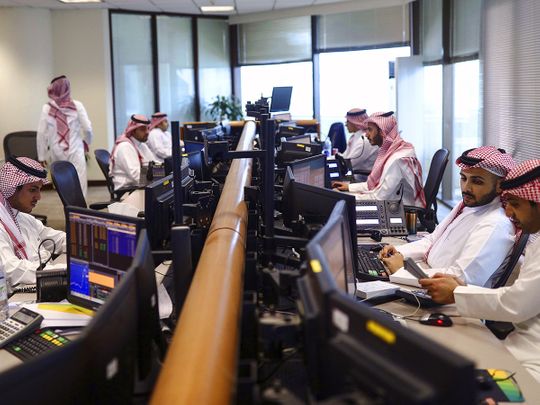
Dubai: Circa June 2014, traders fled UAE equities on massive profit-taking from a rally that was fed by the announcement of Expo 2020, and the upgrade to the emerging market index, along with surging crude to more than $100 per barrel.
The Dubai index tumbled 30 per cent from its May 2014 high of 5,406 within a span of just two months. The Abu Dhabi index also declined 15 per cent after posting its May 2014 high of 5,255.
History is unlikely to repeat itself in Saudi Arabia. In Saudi Arabia’s case, traders might have a little more attraction to stick with their positions after having gained 26 per cent in the run-up to upgrade in June.
“Saudi is a different story from what we saw in the UAE and Qatar. We saw a run-up before the inclusion and then a sell-off post the inclusion. We don’t see happening that in Saudi. The reason is there is a transformation that is going on, although there might a few hiccups, but we believe that they are going in that direction,” Altaf Kassam, EMEA Head of Investment Strategy & Research at State Street Global, told Gulf News.
Saudi Arabia’s vision 2030 plan expects to take its economy off its oil addiction and diversify its economy away from the black gold. The privatisation of its crown jewel, Aramco, is central to the grand plan.
And large cap stocks have been surging on the back of the index inclusion and recovering oil prices. Shares of Al Rajhi Bank have surged, outperforming the benchmark Tadawul. Al Rajhi shares have gained 46 per cent in the past year compared to 16 per cent gains in Tadawul.
However, State Street Global feels that medium and small-cap stocks may offer more value than the large cap stocks, which are at the higher end of the 2-year valuation range.
“I think we would be looking just as the economy moves away from the energy and chemical focused to a more diversified sector approach to be looking down the capital structure to more mid and small caps, and that would give us exposure to more various sectors of the economy,” Kassam said.
Other than Saudi equities, Chinese stocks remain a focus for State Street, which manages $2.5 trillion of client’s money.
“China and Saudi are similar kind of stories where mid-cap and small cap have reasonable valuations. We would have a separate allocation of 20 per cent to China. We look at the more domestically exposed stocks than exports oriented stocks. Consumer sectors such as food and drink, state-owned enterprises,” he added. Kassam feels that investors can derive alpha from United States equities and high yields.












